Tactile maps for the blind [1]
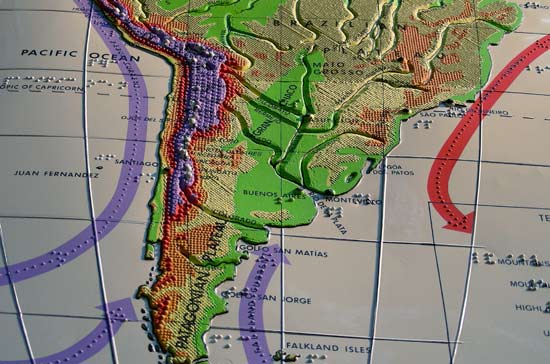
Sonnenberg, school for visually handicapped children and adolescents, Baar
To guarantee the independence of visually handicapped people and to improve their ability to manage the challenges of everyday life, it is essential to provide tools representing spatial information. Tactile maps and reliefs are ideal for forming the mental maps of reality, which are so essential for navigation. Using the sense of touch, a person needs more time to explore a map than using eyes, because it is necessary to study each part of an object separately and then piece the parts together to comprehend it in its entirety [2].
The first tactual maps were created in France in the 18th century. After the brilliant creation of a simple and reasoned tactile type by the 16 year old Louis Braille, the attendance of blind children in special institutions increased and so did the need for adequate teaching aids.
Often, tactile maps are used for city maps and maps of buildings, thus they do not really need to model terrain. However, if the representation of a whole region is needed, terrain has to be modelled. In both cases, the products are three-dimensional.
In tactile maps the inscriptions play an important role. In visual maps, inscriptions can be manipulated in many ways, such as font, size, width, direction. Furthermore, writings can intersect each other without becoming illegible. Braille cannot be manipulated in this way. Thus, in tactile maps abbreviations are used to save space and this requires an explication in a legend or in a supplement. Because of the limited sense of touch, a tactile map contains much less information on the same area than a graphical map, and the amount of signatures is strongly limited. To provide more information, the technique of overlays is often used: Several maps are made of the same area and in the same scale, but with different content. If too many elements are placed on a tactile map, the user becomes confused. In this manner, whole atlases have been made.
To facilitate the reading of tactile maps for people with little remaining visual abilities, such products are often coloured and inscribed with black conventional types.
There are different ways and techniques to create tactile maps:
For the representation of streets, three versions are used. A signature of a street can consist of two thin elevated lines marking the roadsides, a street can be an elevated line in comparison to the houses, or it can be lowered. All these techniques work in practice.
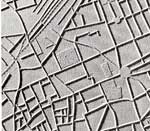

Single-line streets |
Elevated streets |
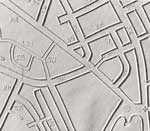
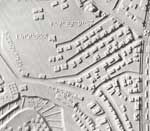
Two lines marking the roadsides |
Lowered streets |
One important requirement for teaching materials for the blind is the need for one single copy for each pupil, since only one person at a time can touch an object and the extent is also limited. It should be possible to embrace the whole map with both hands, since the relative position of the two hands is crucial to gather the correct image. For these reasons, moulded plastic maps are ideal. They are lightweight and durable, and it is possible to produce them fast and easily.
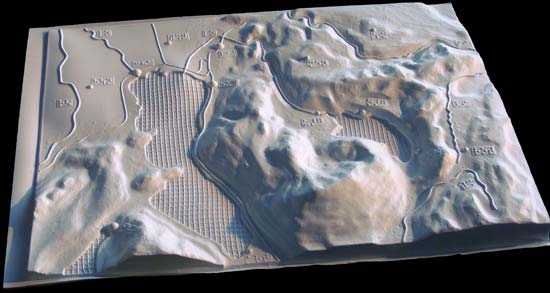
Sonnenberg, school for visually handicapped childs and adolescents, Baar
